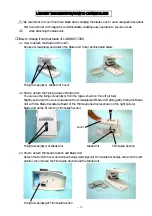
4.1.1 Multi-Wire
Branch
Circuits
Single-pole AFCIs and GFCIs are not suitable for installation where loads are supplied from
multi-wire branch circuits. Multi-wire branch circuits are circuits that share a common neutral
conductor between two or more phase conductors that are supplied from different phases of the
distribution system. Load currents are not balanced between individual phase conductors and the
shared neutral conductor in multi-wire branch circuits. This steady-state imbalance causes
nuisance tripping of AFCIs and GFCIs. Single-pole AFCIs and GFCIs must directly compare
balanced loads between an individual phase conductor that has a dedicated neutral conductor.
Two-pole AFCI circuit breakers are available for multi-wire branch circuits. If the circuit
breaker has a common trip, two circuits are de-energized when the AFCI detects and arc-fault. If
the circuit breaker has independent tripping between the two phase conductors, the shared neutral
continues to carry load currents even though the one phase conductor is de-energized.
4.2
Electrical Safety
A.
Neglecting fundamental installation and maintenance requirements may lead to personal
injury or death, as well as damage to electrical equipment or other property. All work
and actions must conform to the requirements of NFPA 70E-2004, Electrical Safety in
the Workplace.
B.
Do not work on energized equipment. Do not enter equipment enclosures with
components are energized. Electrically isolate conductors and equipment in accordance
with established procedures and manufacturer’s instructions and recommendations.
Guard energized conductors and equipment in close proximity to work.
C.
Consider all ungrounded and grounded metal parts of equipment and devices to be
energized at the highest voltage to which they are exposed unless they are de-energized
and tested in accordance with OSHA requirements.
D.
De-energize conductors and equipment by opening source switching devices to
completely isolate equipment and circuits from all power sources before exposing any
conductors. Test conductors and equipment at both sources and equipment terminals to
confirm that they are de-energized.
E.
Use appropriate Personal Protective Equipment (PPE) and established safety procedures
when working on or near energized electrical equipment, or equipment that has not been
de-energized in accordance with NFPA 70E-2004, Electrical Safety in the Workplace.
Do not wear conductive articles such as watches, rings, etc.
F.
Use insulated hand tools when working on or around energized equipment. Use only
properly rated tools for the energy present. Maintain tool inventories to ensure that all
tools are removed from equipment prior to energizing.








































